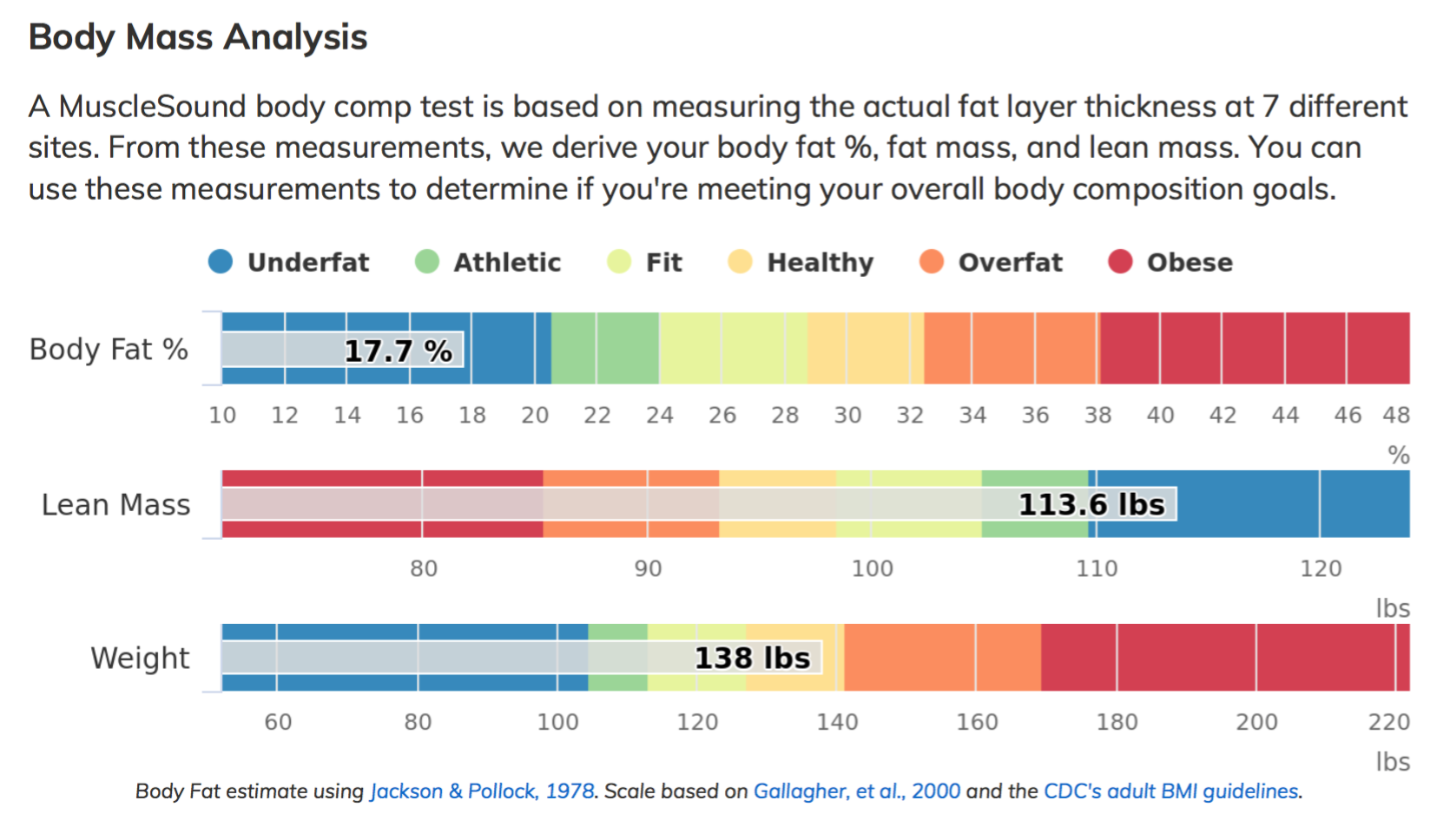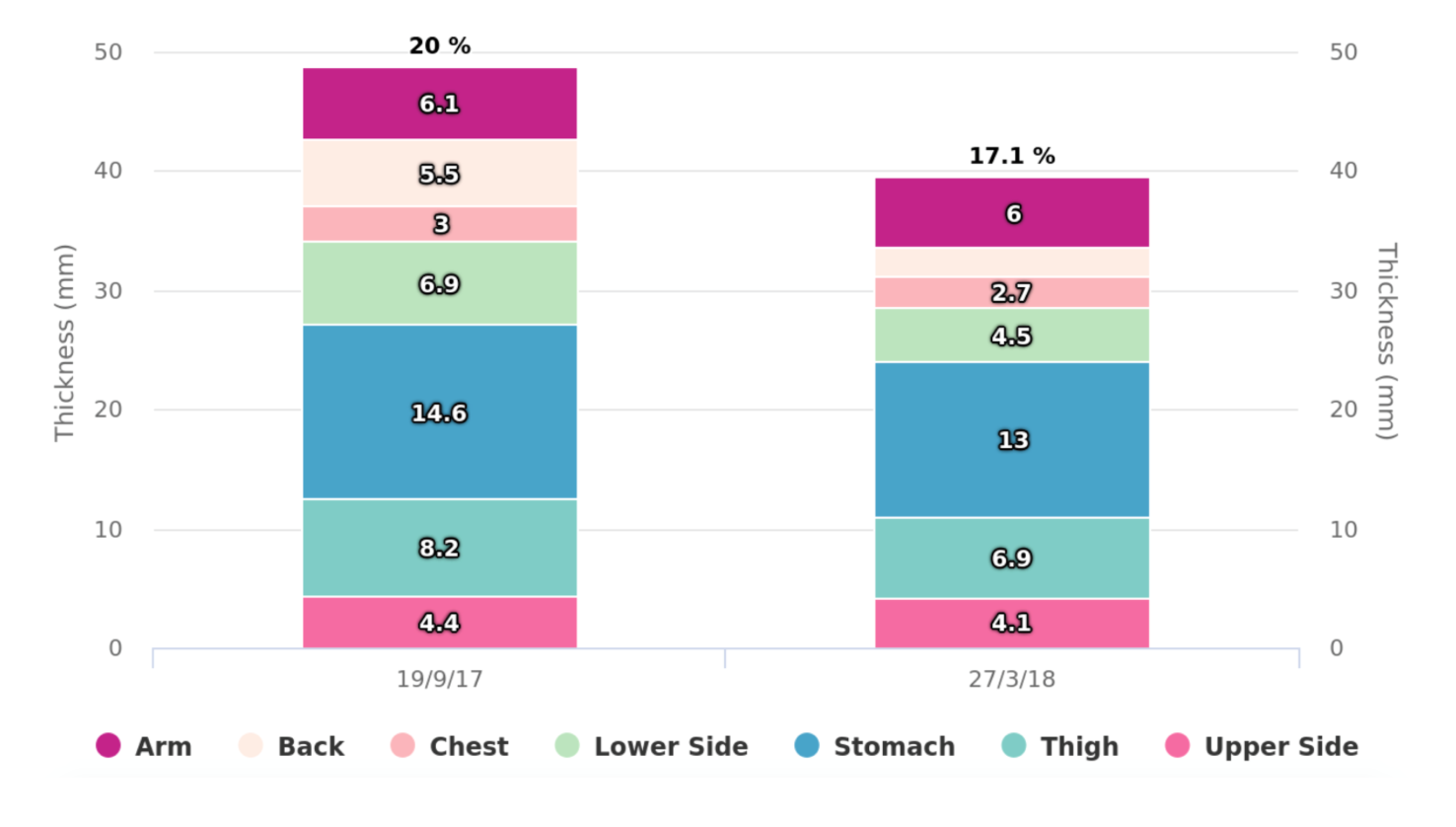Body
Composition
Use Ultrasound Technology to Know Your Body Fat Percent
How much muscle and body fat do I have? Instead of just knowing a body fat percentage, can I get a breakdown of fat thickness on different parts of my body so I can track over time?
Ultrasound set-up at On Your Mark Nutrition.
The number on a scale does not give us a complete picture of your health. Weight can fluctuate depending on your hydration status, when and what you ate, etc. Most importantly, the number doesn't tell you what proportion of your weight is fat.
Measuring body composition is much more valuable because it can help identify health risks, track age-related body composition changes and better evaluate weight loss or weight gain strategies. This measurement is another tool in the toolbox for health optimization.
Using the MuscleSound® and the medical grade portable ultrasound, body fat and lean body mass can be comfortably measured with a breakdown of fat thickness at 7 different areas of the body.
Benefits of MuscleSound & UltraSound
Ultrasound image of the thigh.
Highly accurate and reliable body composition assessment. Recent research suggests that ultrasound is a reliable, valid and quick method for assessing both subcutaneous (i.e., fat underneath the skin) and visceral adipose tissue (i.e., fat surrounding your body organs)
A better alternative to InBody (the machine that sends an electrical current through your body to assess body composition and is used by many gyms, fitness centers and doctors) because this type of machine requires you to be fasted and is influenced by skin temperature, strenuous exercise, hydration level, and glycogen depletion. Your result from the InBody machine uses a prediction equation that is population-specific. Therefore, it's validity is highly questionable. Ultrasound does not require you to be fasted and there is no influence on the results like the InBody. There is no equation used for ultrasound because it uses the image to assess body fat percentage. Also, ultrasound provides a breakdown of the fat thickness at each of the 7 body sites whereas InBody just gives you a body fat percentage.
A major review of body composition methods reported that ultrasound techniques are highly valid and reliable measures of subcutaneous fat:
“There are good reasons to assume that ultrasound will replace the widely used skinfold, bioimpedance and other field methods with their well-known inherent shortcomings.”
Measurements Taken
7 sites to assess percent body fat and percent muscle mass (chest, back, arm, upper body, lower body, stomach and thigh)
Breakdown of fat thickness at individual sites
Track changes over time in these locations
Information You Will Receive
A report quickly emailed to you with your assessment of percent body fat - including a breakdown of fat thickness at the 7 layers so that you can track changes over time.
Body Mass Analysis.
Measurement of 7 subcutaneous fat layers and how they change over time due to diet and exercise.
Test Details
Collection: scans are taken to measure 7 subcutaneous fat layers (chest, back, arm, upper side, lower side, stomach and thigh)
Test Duration: 5-10 minutes
Test Results: post-test
Follow Up Testing: every ~3-4 months







